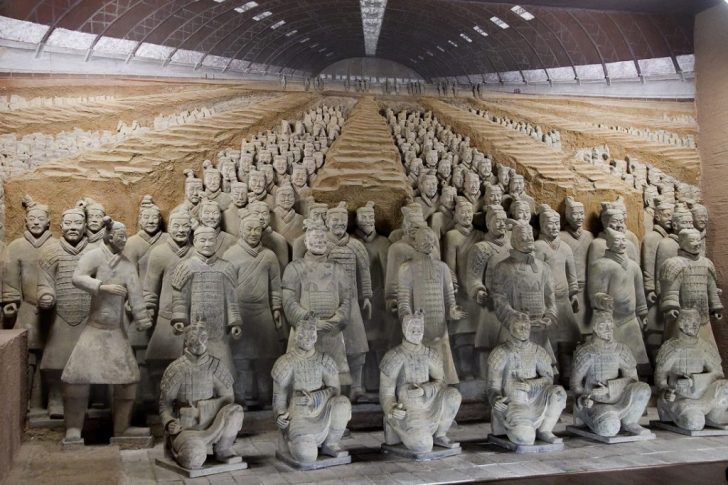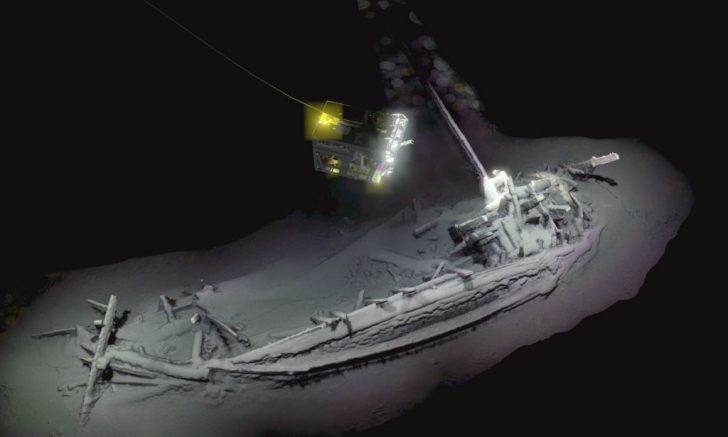Some of the most amazing archaeological discoveries have come completely by accident. Imagine digging a hole or going about your daily work, only to stumble upon something that turns out to be an ancient treasure, rewriting history.
These accidental finds have changed the way we view our past, providing rare glimpses into the worlds that existed long before us. Here are five such jaw-dropping discoveries that were made entirely by mistake:
The Terracotta Warriors (1974)
The discovery of the Terracotta Warriors is one of the most incredible archaeological finds ever. In 1974, a group of Chinese farmers in the region near Xi’an were digging a well when they uncovered thousands of life-sized clay soldiers.
Each figure, some standing as tall as six feet, was unique, with distinct facial features, likely modeled after real soldiers who served under China’s first emperor, Qin Shi Huang. The soldiers were part of a massive underground army meant to protect the emperor in the afterlife.

What began as an ordinary well-digging project quickly turned into one of the largest archaeological excavations in the world. Today, the Terracotta Army is a major historical and cultural symbol of ancient China. It is a remarkable glimpse into the emperor’s power and the extraordinary craftsmanship of the time.
The Rosetta Stone (1799)
In 1799, a group of French soldiers working in Egypt during Napoleon’s campaign discovered a large stone slab near the town of Rosetta. This unassuming stone, which would have been used in construction, turned out to be a key to unlocking the secrets of ancient Egyptian writing.
Inscribed with a decree in three scripts, hieroglyphs, Demotic, and Greek, the Rosetta Stone allowed scholars to finally decipher Egyptian hieroglyphs, a script that had been a mystery for centuries.
The find, which was almost used as building material, proved to be a groundbreaking moment in the study of ancient Egypt. Without it, we might still be unable to understand much of the writing found in tombs and monuments from one of the world’s oldest civilizations.
Today, decades later, the Rosetta Stone remains one of the most famous discoveries in archaeological history.
Bog Bodies and Artifacts
In the 1950s, peat cutters in Northern Europe were going about their work when they stumbled upon an unexpected treasure. While digging in the boggy marshes, they found human remains preserved so perfectly that they looked as though they had just died. These “bog bodies” date back thousands of years, preserved by the anaerobic conditions in the peat.
Along with these bodies, remarkably preserved artifacts, like a 14th-century longsword and even edible butter, were also discovered, providing us with a rare window into life in ancient times.
What makes bog bodies so unique is how well they are preserved. The oxygen-free environment in the bogs creates a natural preservation method that keeps skin, hair, and even clothing intact.

Black Sea Shipwrecks (2016)
In 2016, a routine maritime archaeology project aimed at mapping changes in sea levels turned into a stunning revelation. The team, working off the coast of Bulgaria in the Black Sea, accidentally discovered more than 40 ancient shipwrecks, many dating back thousands of years.
The deep waters of the Black Sea, devoid of oxygen, have preserved these wrecks in near-perfect condition, allowing archaeologists to study them as if they had just sunk.
Pompeii’s Plaster Casts
When workers began excavating the ancient city of Pompeii, buried under volcanic ash from Mount Vesuvius, they found hollow spaces where bodies had once lain. These gaps were left behind after the flesh and organs of the victims decayed over time.
In a stroke of genius, the workers decided to pour plaster into these voids, creating life-like casts of the people who perished in the eruption.
The result was one of the most haunting archaeological discoveries. The plaster casts revealed the victims in their final moments, frozen in time, an invaluable glimpse into the tragic day the city was destroyed.




